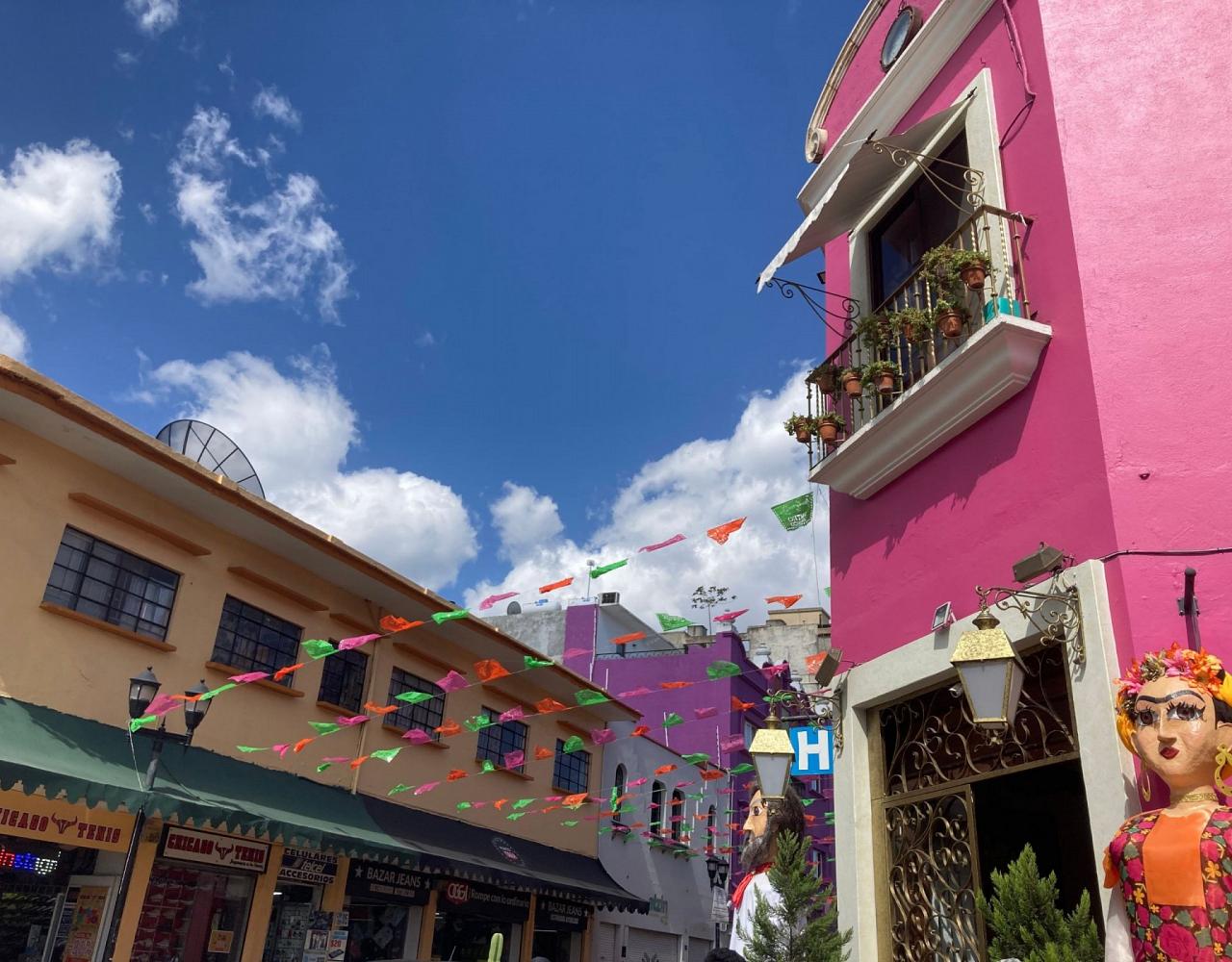- Overview
- Full Itinerary
- Photo Gallery
- Costing
- Travel Details
- Trip Reports
- Guides
- Map
- Know Before You Go
On this delightful tour, it’s so easy to blend the enjoyment of local foods and culture in a World Heritage Site with some truly exceptional birding! Time in Oaxaca City is memorable and yet nature is just a short drive away—the city is surrounded by mountains with varied habitats that we can easily access at different elevations. Many of the specialty birds can be found at significant archeological sites like Monte Alban and Yagul, both stunning sites to take in history and find the birds. We spend four nights in city accommodations from which we explore the greater Oaxaca Valley and northern mountains, and then we venture to the southern side of the valley and up into the mountains to stay three nights in cozy cabins (with fireplaces!) in pine forests where hummingbirds, including the endemic Bumblebee, and higher elevation species abound. We next drive to Oaxaca's gorgeous southern coast, where we spend five nights in Huatulco, our base for further splendid birding adventures.
Surrounding the Oaxaca Valley are two mountain ranges that come together—the southern end of the Sierra Madre Oriental meets the Sierra Madre Sur creating an area rich in biodiversity. Oaxaca Valley has a lovely climate as it lies at an elevation of over 6,000 feet. Some of our birding is in lush forests at 9000 feet, where fresh air and cool temperatures abound. The elevational gradient holds a great array of habitats where we have a grand time looking for 12 bird species endemic to southern Mexico including Oaxaca and Bridled Sparrows, Ocellated Thrasher, Pileated Flycatcher, Dwarf and Slaty Vireos, White-throated Towhee, and Boucard’s Wren. These are residents so they are present year-round.
Our guide and host this year is Eric Martinez, resident of the Oaxaca Valley at Teotitlan, a village famous for rug weaving. Eric is a fabulous all-around naturalist, keen birder, and avid conservationist. He interprets the landscapes, knows the butterflies (of which there are many!) and, as a resident, his knowledge of where to find the birds is unsurpassed. Oaxaca is famous for its food and hospitality … dining is a big part of our fun!
- “Great trip for adventure, birding, nature, culture and sites! Archeological sites were such a learning opportunity…The weaving destination and lecture was fascinating. We gained so much new knowledge, just fabulous! Eric Martinez was the best birding guide we’ve ever experienced. His expertise, bird identification, bird calls, bird captures on scopes, etc. was outstanding. His humanity, enthusiasm, warmth, support and kindness were very appreciated.” — Kathy & Al Hirschler, 2023 Travelers
- “Interesting ecology and culture, very talented guide, skilled driver, gorgeous birds and butterflies as promised. Fantastic diversity — gorgeous!” — 2023 Traveler
- “A great itinerary! We spent enough time at several overnight locations to be somewhat settled in and explore the surroundings, but we also were able to sample a wide range of Oaxaca habitats. My number one highlight was seeing a diversity of hummingbirds, especially around San Jose del Pacifico.” — John Wiens, 2023 Traveler
- “Outstanding. The destination and itinerary far exceeded my expectations. Highlights: the expertise and overall excellence of the guide; the beauty of landscape and birds and butterflies; and our tour of the carpet weaving studio and Monte Alban.” 2023 Traveler
Tour Highlights
- Enjoy outstanding birding in and around the Oaxaca Valley
- Sample flavorful and customary Oaxacan and Mexican foods
- Visit the famous Zapotec ruins of Monte Alban and local museums
- Examine an array of habitats on an elevation gradient from Oaxaca’s valley to surrounding mountains
- Continue up and over the mountains to the Pacific Coast at Huatulco
- Find endemic birds in tropical deciduous forest at La Pluma
Trip Itinerary
Itineraries are guidelines; variations in itinerary may occur to account for weather, road conditions, closures, etc. and to maximize your experience.
Mon., Oct. 19 Welcome to Oaxaca City!
Welcome to Mexico! Please plan to arrive in Oaxaca City no later than 6:00 PM today. Please note that our culture and shopping fans may wish to arrive early to explore a bit on their own. It’s easy to walk around historic parts of the city, replete with artisan shops and crafts. And the city parks can have some nice birding— Gray Silky Flycatcher and Rufous-backed Robin may be found in the town’s plazas.
Meet your guides and fellow travelers at a welcome dinner tonight, and savor your first sample of Oaxacan cuisine! Afterwards, we have a brief orientation to go over information about the birding and week ahead.
Accommodations at Hotel Victoria, Oaxaca City (D)
Tues., Oct. 20 La Cumbre | Ixtepeji | Yagul
What can be better than birding in fresh mountain air with marvelous views back down to the Oaxaca Valley. We start early to head up through the vegetation zones that adorn the mountains, passing from scrub up to oak woodland and into lush humid pine oak forest located about 45 minutes north of Oaxaca City near the town of Ixtepeji, known to birders as La Cumbre. We explore on trails and quiet roads, moving slowly at a birder’s pace since we are at 9,000 feet elevation. This lush forest is the upper part of the Benito Juarez National Park and home to the striking Red Warbler, Dwarf Jay, Collared Towhee, Mountain Trogon, Chestnut-sided Shrike Vireo, possible Russet Nightingale-Thrush, and other species. Mixed flocks are common here, often signaled by noisy flocks of Gray-barred Wren; with any luck Dwarf Jay might be with them. Mexican Chickadee, Crescent-chested Warbler, Slate-colored Redstart, and Red Crossbill are likely finds today as well.
Lunch is with the birds at a delightful local restaurant that has hummingbird feeders on its patio. Hot soup and warm tortillas may be most welcome in the cool mountain air. Blue-throated Mountain-gem may be at arm’s length. Rufous-capped Brushfinch and the olive morph of Spotted Towhee may be active in the gardens. And Acorn Woodpecker is quite common in tall pines just off the deck.
We head down the mountain, and if time allows we visit the beautiful archaeological site of Yagul. The setting is enchanting with fine views of the mountains. Columnar cacti on the entrance road are a good spot to find Beautiful Hummingbird visiting flowers, along with Grey-breasted Woodpecker, Dusky Hummingbird, and more.
Returning to the city we pick out a wonderful spot for dinner, tally up our species list, and recount the day.
Accommodations at Hotel Victoria, Oaxaca City (B,L,D)
Wed., Oct. 21 Teotitlan | Piedra Azul Reservoir | Local Weaving
Eric, our guide, is from the village of Teotitlan and is proud of their Zapotec heritage. A quieter village than the city but rich with artisans, we weave our way through a mix of habitats starting with some arid-scrub around town and moving up to Piedra Azul Reservoir just above the town on the road that winds into the mountains. We scan for Least Grebe, Green Kingfisher, and any water birds and shore birds that are present.
Birding in Teotitlan del Valle, located about 45 minutes east from Oaxaca City, at about 5200 feet elevation, is known to birders as a great place to scan scrub vegetation for Mexican endemic and specialty species in the area that include Bridled Sparrow, Boucard’s Wren, Dusky Hummingbird, Gray-Breasted Woodpecker, White-throated Towhee, White-striped Woodcreeper, and Collared Towhee.
Going into the foothills we have a chance for two often vocal but hard to find species: Dwarf Vireo and Slaty Vireo. Blue Mockingbird may be present, Rose-throated Becard is always nice to see, as well as Streak-backed Oriole. We keep an eye peeled for Lesser Roadrunner. Enjoy a local lunch at one of Eric’s favorite restaurants.
If there is interest we can visit a local weaver and learn more about the rich colors and patterns of Zapotec rugs made with natural dyes. On the way back, we try for the valley’s namesake Oaxaca Sparrow, and watch the sky for raptors above the agricultural fields that rim the village.
Back in Oaxaca City, we have another fine meal, tally up our list, and prep for another good field day tomorrow.
Accommodations at Hotel Victoria, Oaxaca City (B,L,D)
Thurs., Oct. 22 Las Guacamayas | Oaxaca City
Today we head northwest on Highway 190, sampling our way through a mix of habitats. We focus much of our time in scrub vegetation and the mixed shrub arroyos that cut through them. We work our way up to oak woodland at a mid-elevation site (about 6000 ft.), good for endemic Ocellated Thrasher, Oaxaca Sparrow, and another chance to find Slaty Vireo. The vegetation mix is fascinating, with plants showing adaptations to arid conditions. This is a good area for butterflies. Elegant Euphonia occurs here, Nutting’s Flycatcher, White-throated Towhee, Black-vented Oriole, and we could find the often elusive Blue Mockingbird.
We enjoy lunch along the way and return in time for a break, and then go into the historic section of the city with time to explore a bit ahead of dinner.
Accommodations at Hotel Victoria, Oaxaca City (B,L,D)
Fri., Oct. 23 Morning at Monte Alban | Drive to San Jose del Pacifico
This morning’s highlight is a visit to the striking archaeological site of Monte Alban, the largest and most important pre-Columbian site in the state, starting around 500 BC. Intricate and fanciful carvings adorn buildings, many depicting animals. The ruins are situated around an open plaza.
We bird our way there, as the entrance road has nice views and vegetation, then we park and walk through the historic site. Monte Alban has some interesting species of birds such as Rock Wren, Cassin’s Kingbird, Vermilion Flycatcher, and perhaps some lower elevation mixed flocks that may include Golden Vireo. After birding and enjoying the history of the site we find a local place for lunch and then have a travel afternoon, with a scenic four-hour drive to the town of San Jose del Pacifico for three nights.
We arrive at our cozy lodge in time to check out the hummingbird feeders; with luck we may find Rivoli’s, White-eared, Garnet-throated, or the tiny Bumblebee. At night we listen for songs of Mexican Whip-poor-will.
Accommodations at La Puesta del Sol, San Jose del Pacifico (B,L,D)
Sat., Oct. 24 San Jose del Pacifico
Cool and comfortable while birding in San Jose at 8,000 feet elevation, today we can have a nice, relaxed pace morning as our lodge grounds have wonderful plantings, trees, and birds. We may hear or, with luck, see Long-tailed Wood-Partridge. Other possible species include Gray-Silky Flycatcher, Cinnamon-bellied Flowerpiercer, and more chances for Red Warbler, Yellow-eyed Junco, Flame-colored Tanager, and other highland species.
In the afternoon we check out the hummingbird feeders for activity and we may venture down the winding highway to a quiet road that descends to a village. The forest here is draped with bromeliads and mosses, a magical realm to enjoy.
Tonight we go into town to try a fun local Italian restaurant.
Accommodations at La Puesta del Sol, San Jose del Pacifico (B,L,D)
Sun., Oct. 25 Drive to the Southern Coast | Birding the Sierra Madre de Sur
Today gives us a marvelous sample of geography as we make our way down toward the coast. While this is a travel day, winding through the mountains we break it up with many birding stops along the way and enjoying the sceneries of the Sierra Madre de Sur, one of the three great mountain ranges of Mexico. Once across it we find a new array of species!
Arrive and enjoy settling in, take a swim, or bird the grounds of your delightful coastal accommodations. The hotel gardens are lush with plantings, most rooms have balconies and all have lovely art and Mexican furnishings. Spoil yourself a bit here in between some great birding!
Accommodations at Hotel Villablanca in Huatulco (B,L,D)
Mon., Oct. 26 Pluma Hildago | Birding Tropical Deciduous Forest
We get up early today, retracing our steps a bit to be at a fine mountain site early in the morning in the vicinity of Pluma Hidalgo. Our day starts low in the upper areas of Tropical deciduous forest. Some of the species possible today include the Oaxaca endemic Blue-capped Hummingbird, Wagler’s (Emerald) Toucanet, Mexican Hermit, Red-headed Tanager, and Golden Vireo.
We have lunch at a coffee finca where we can sample shade grown coffee. The food is delicious and the hospitality is so welcoming. We then drive back with some birding on the way, looking for Ferruginous Pygmy Owl, Happy Wren, Greenish Elaenia, White-tipped Dove, and Red-legged Honeycreeper.
Accommodations at Hotel Villablanca in Huatulco (B,L,D)
Tues., Oct. 27 Lowland Deciduous Forest | Gardens and Feeders
Birding near the city of Huatulco in low deciduous forest, we visit several trails in the low deciduous forest near Huatulco for species such as Orange-breasted Bunting, Russet-crowned Motmot, Golden-cheeked Woodpecker, Citreoline Trogon, Happy Wren, Red-Breasted Chat, and other species. This area is superb for butterflies too, whether you are experienced or just starting to have an interest here, Eric can draw you in with his knowledge and excitement for these smaller winged jewels.
We arrive back in time to see what’s patrolling the gardens and feeders. Then, we have time to tally up our findings and enjoy another nice dinner.
Accommodations at Hotel Villablanca in Huatulco (B,L,D)
Wed., Oct. 28 Ocean Birding by Boat
Today enjoy a mini-pelagic trip, a nice change of pace to be out on the water. The continental shelf in Coastal Oaxaca is about five miles out, thus the area is a great spot for many tropical pelagic species such as Galapagos Shearwater, Wedge-tailed Shearwater, Black and Least Storm-Petrels, and chances for jaegers and boobies.
We have time to work the coastline as well, and enjoy some of the birds that are right in our hotel gardens.
Accommodations at Hotel Villablanca in Huatulco (B,L,D)
Thurs., Oct. 29 Copalita River Shorebirds | Foothills Birding & Butterflies
Today we explore the area in more detail and we have our eye on a few new spots, depending on what we have seen so far on the trip. One option for us is the river mouth of the Copalita River where Collared Plover are possible along with many other great birds. Here we find almond, mahogany, and fig trees as well as mangroves. We may also go check out the foothills in search of Yellow-winged Cacique or any missing species that we may still hope to find. October is a fabulous time to visit as migration is well under way. Mexico narrows here near the Tehuantepec Isthmus and acts as a funnel for migrating raptors, songbirds, and shorebirds.
We return in time to freshen up and then enjoy our farewell dinner with time to recount our trip highlights.
Accommodations at Hotel Villablanca in Huatulco (B,L,D)
Fri., Oct. 30 Departure from Huatulco’s International Airport
Depart today at your leisure from Huatulco International Airport. This tour requires a multi-city flight, going in to Oaxaca and out of Huatulco. Our guide and vehicles do return to Oaxaca, so if anyone wants to return there, please check with us on the timing. Our tour’s end date is well-timed for festivities associated with the Day of the Dead over the next weekend … it is a very busy time for Oaxaca City. If you want to experience Day of the Dead activities, you need to make plans far in advance; we can recommend hotels and restaurants near the plazas. (B)
Cost of the Journey
Cost of the tour is per person, based on occupancy: $5590 DBL / $6425 SGL, from Oaxaca City, departing Huatulco. Cost includes all accommodations; all meals as stated in the itinerary; group airport transfers; ground transportation; professional guide services; park, preserve, and other activity fees; and miscellaneous program expenses.
NEW! all tips other than your NJ guide (optional) and local guide are included (this includes tips for your driver, lodge and staff, day activities, meals and other services).
Tour price does not include roundtrip airfare to Oaxaca City and from Huatulco or items of a personal nature such as laundry, telephone charges, or beverages from the bar.
Travel Details
Please plan to make air travel plans only after the minimum group size has been met. We will send you a confirmation email as soon as the trip has been confirmed.
Arrival Airport: Oaxaca International Airport (OAX)
Arrival Details: Plan to arrive October 19, 2026, no later than 6:00 PM
Departure Airport: Bahias de Huatulco International Airport (HUX)
Departure Details: Plan flight departures on October 30, 2026, at your leisure
Our guides and vehicles return to Oaxaca if anyone wants to return there. Please note it is a long and windy drive that takes 8 hours. You would likely have to overnight in Oaxaca and fly out the following day. Please check with us on the timing.
Travel Tips: Oaxaca is renowned for food, colorful architecture, and street life. We recommend you come in early and enjoy it! A hotel we recommend in the heart of the historic area is Hotel de la Parra. It’s close to museums, shops, and restaurants. There are other hotels in this area and we can pick you up at the one of your choice on the tour start date. If you’re looking for things to do in Oaxaca, there are plenty of options! One of the most important archaeological sites in Latin America is right outside Oaxaca. Zona Arqueológica de Monte Albán was inhabited over a period of 1,500 years and has a lot to explore. If you’re into museums, the Museo de las Culturas de Oaxaca shouldn’t be missed. It’s located in a sprawling former monastery and has displays on regional history and culture including 14th century Mixtec artifacts. Does shopping and checking out local food sound more appealing? Then you should visit one of the many markets in Oaxaca. Mercado Benito Juárez is one of the more popular markets and located right in the historic area. Any attractions not within walking distance can be reached via taxi. For those who love beach time, you may want to add a few nights to the end of our tour to unwind ahead of travel. You can book additional nights at our last night tour hotel, Hotel Villablanca, and give us the confirmation number, with the goal being you don’t have to switch rooms.
Entry Requirements: See "Essential Information" section under the "Know Before You Go” tab.
Browse below for trip reports and species lists from past versions of this and other tours from this destination.
Mexico
Alamos
- November 2017
- December 2023
Butterflies & Birds
- February 2020
- February 2022
- February 2023
- February 2024
Oaxaca
- October 2021
- August 2022
- October 2022
- August 2023
- January 2024
- July 2024
- October 2024
- December 2024
- February 2025
- October 2025
Rancho Primavera
- April 2025
Sea of Cortés
- March 2017
- February 2019
- March 2022
- March 2023
Veracruz
- September 2019
- September 2021
- October 2022
- October 2025
Rancho Primavera
- April 2025
-
Eric Martinez — Mexico Expert
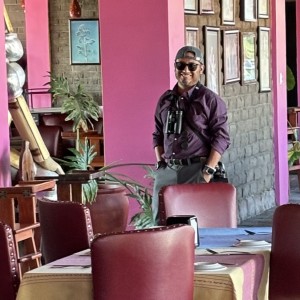
Eric Antonio Martinez, has birded the Oaxaca area for nearly 20 years. His interest started in his own village of Teotitlan del Valle, but birding has taken him to many other parts of the world. He has volunteered and worked at the Long Point Bird Observatory in Ontario, Canada, and he visits Cuba each year to see family and bird (of course). Eric travels extensively within Mexico to enjoy the birds of his beloved country.
Other trips with Eric Martinez — Mexico Expert
-
 Grand Oaxaca: Birds, Culture & Crafts FULL - See our April departure!January 11 - 22, 2026
Grand Oaxaca: Birds, Culture & Crafts FULL - See our April departure!January 11 - 22, 2026 -
 Belize: A Short & Sweet Birding Blitz Save $200! Crooked Tree Lagoon & Chan Chich Rainforest LodgeMarch 8 - 14, 2026
Belize: A Short & Sweet Birding Blitz Save $200! Crooked Tree Lagoon & Chan Chich Rainforest LodgeMarch 8 - 14, 2026 -
 Grand Oaxaca: Birds, Culture & CraftsApril 21 - May 2, 2026
Grand Oaxaca: Birds, Culture & CraftsApril 21 - May 2, 2026 -
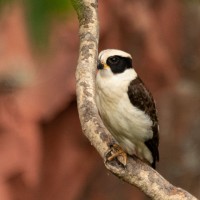 Oaxaca Valley: Birds, Culture & Crafts A private tour for St. Louis Audubon.August 1 - 9, 2026
Oaxaca Valley: Birds, Culture & Crafts A private tour for St. Louis Audubon.August 1 - 9, 2026 -
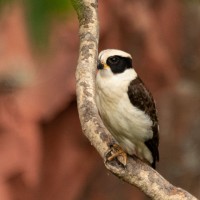 Oaxaca Valley: Birds, Culture & CraftsDecember 1 - 9, 2026
Oaxaca Valley: Birds, Culture & CraftsDecember 1 - 9, 2026
-
-
James P. Smith

James brings some twenty five years of guiding experience to Naturalist Journeys. Originally from Sheffield in the United Kingdom, he discovered a love for guiding in Israel in 1995 where he helped establish the Kibbutz Lotan Center for Birdwatching in the Southern Arava Valley. Since then, he’s led hundreds of tours throughout the Northern Hemisphere for a number of UK-based tour companies. His trips to Israel and North America are especially close to his heart but he’s also led or co-led tours to Mexico (Veracruz), The Gambia, Kenya, Iceland, Scottish Highlands, Spanish Pyrenees, Central/Southern France, Greece (Lesvos), and India (Goa). An accomplished illustrator, James placed runner-up in the British Birds “Bird Illustrator of the Year” competition in 1992 and went on to have his work published in numerous birding magazines and journals. He also co-authored the two volume set A Guide to the Birding Hotspots of Israel (Published in 2000 by the Israel Ornithological Center and the S.P.N.I.). He returns to Israel every year to lead trips and remains an active member of the Israel Rarities and Distribution Committee. When not leading tours he can be found at home in Western Massachusetts with his wife Susannah and their young son Matan.
Other trips with James P. Smith
-
 Trinidad & Tobago: Incredible Birds & Wildlife CLOSED - See our other January departure!January 4 - 13, 2026
Trinidad & Tobago: Incredible Birds & Wildlife CLOSED - See our other January departure!January 4 - 13, 2026 -
 Belize: Three Great Lodges FULL - See our March departure!February 18 - 28, 2026
Belize: Three Great Lodges FULL - See our March departure!February 18 - 28, 2026 -
 Colombia: Santa Marta & the Atlantic CoastMarch 10 - 20, 2026
Colombia: Santa Marta & the Atlantic CoastMarch 10 - 20, 2026 -
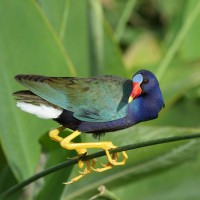 Texas Coast & Big ThicketApril 15 - 23, 2026
Texas Coast & Big ThicketApril 15 - 23, 2026 -
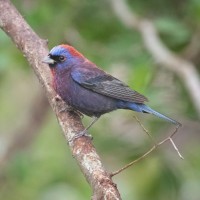 Texas Hill CountryApril 24 - 29, 2026
Texas Hill CountryApril 24 - 29, 2026 -
 Cape May: Spring MigrationMay 12 - 18, 2026
Cape May: Spring MigrationMay 12 - 18, 2026 -
 Trinidad & Tobago: Incredible Birds & WildlifeJune 15 - 24, 2026
Trinidad & Tobago: Incredible Birds & WildlifeJune 15 - 24, 2026 -
 A Week at Belize's Black Rock Lodge A Short & Sweet Summer Birding BlitzJuly 19 - 25, 2026
A Week at Belize's Black Rock Lodge A Short & Sweet Summer Birding BlitzJuly 19 - 25, 2026 -
 Brazil’s Pantanal: Jaguars! And More… FULL - See our June Departure!August 15 - 25, 2026, w/Amazônia extension
Brazil’s Pantanal: Jaguars! And More… FULL - See our June Departure!August 15 - 25, 2026, w/Amazônia extension
-
Essential Information +
Pace & Protocols +
Packing List +
Suggested Reading List +
Useful Links +
Photo credits: BANNERS: Crested Caracara (NJ Stock), Colorful Textile Yarn (Peg Abbott), Monte Alban (Priscilla Erickson), Red-legged Honeycreeper (NJ Stock), Emerald Toucanet (Peg Abbott), Scenic (Peg Abbott), Green Violetear (Sandy Sorkin), Acorn Woodpeckers (Terry Peterson) THUMBNAILS: Green Jay (NJ Stock), Altamira Oriole (NJ Stock), Lesser Roadrunner (NJ Stock), Great Kiskadee (NJ Stock), Coppery-tailed Trogon (NJ Stock), Golden Vireo (NJ Stock), Blue Mockingbird (NJ Stock), Black-vented Oriole (NJ Stock),










